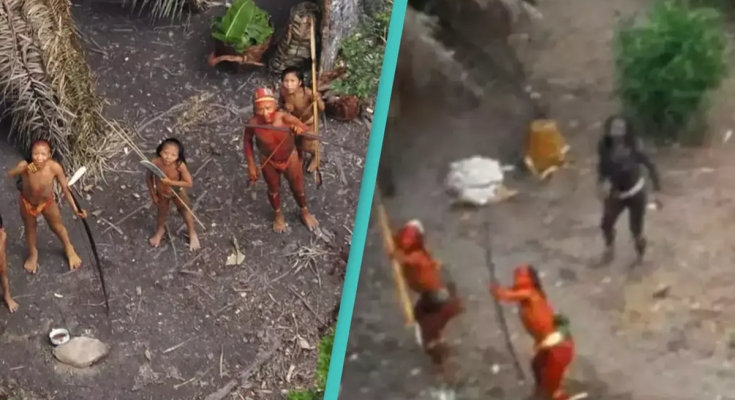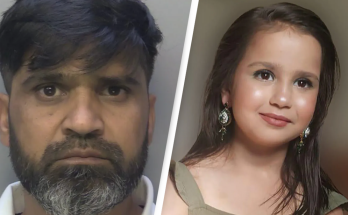One person noted that they don’t know of the existence of social media
An uncontacted tribes expert captured incredibly rare footage of people who have been uncontactable, to ‘prove they exist’.
In world where we are able to speak to someone on the other side of the globe within seconds, it’s hard to believe that there are people who don’t know that social media, supermarkets, and phones exist.
However, drone footage – taken by G. Miranda for Survival International – has captured videos of tribespeople who have been disconnected from the rest of the world.
The drone flew over North Sentinel Island in a remote part of India, as well as the Amazon tribes in Brazil near the Javari River valley by the Peru border.
The videos were created to highlight just how different life can be lived on earth, as we get caught up in such busy and heavily online lives.
A video compiling photographs of these uncontacted people has been viewed more than 3.5 million times since being posted on the Death Island Expeditions YouTube page in 2018.
The video shows small settlements and homes, as well as tribespeople.
Some images show the tribespeople armed with bows and arrows and looking directly at the drone or photography equipment.
“It blows my mind how different our lives are. The fact that they don’t even know about the existence of grocery stores, factories, phones, social media, everything that makes our society what it is. It’s so surreal,” one user wrote..webp)
FUNAI, the National Indian Foundation, is the Brazilian government body that establishes and carries out policies relating to uncontacted policies relating to indigenous people.
It is also responsible for some of the drone images seen in the video.
The footage of the uncontacted tribespeople of Brazil were taken in 2008, according to a report by Survival International, a human rights organisation.
According to reports, there was mounting pressure on FUNAI from powerful economic interests and politicians to prove these tribes existed, as they fought against development in the Amazon.
“We did the overflight to show their houses, to show they are there, to show they exist,” said uncontacted tribes expert José Carlos dos Reis Meirelles Júnior.
In 2008, Meirelles also noted how the uncontacted tribes of the region were in danger from illegal loggers in Peru, which could result in conflict.
“What is happening in this region [of Peru] is a monumental crime against the natural world, the tribes, the fauna and is further testimony to the complete irrationality with which we, the ‘civilised’ ones, treat the world,” he said.
Indigenous leaders in Brazil celebrated FUNAI’s decision to release the footage, insisting that these communities face a very high risk towards contagious diseases and outsider violence if they are contacted.
“The very fact that these groups are uncontacted makes them particularly vulnerable because they’re invisible to the majority of the public,” Beto Marubo, an indigenous activist, told National Geographic.



